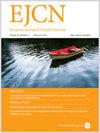解读尿碘浓度:尿液稀释和收集时间的影响。
IF 3.6
3区 医学
Q2 NUTRITION & DIETETICS
引用次数: 0
摘要
目的:在人口研究中,碘摄入量的估算依赖于尿碘浓度中位数(UIC)。然而,解释尿碘浓度的测量结果可能具有挑战性:在我们的研究中,我们纳入了来自三个群体的 772 名成年参与者:具有全国代表性的性别混合群体、育龄妇女和孕妇。我们测量了 UIC 和尿肌酐 (U-Cr),以计算碘肌酐比值 (I/Cr)。U-Cr 的临界值为 0.226 克/升,用于区分稀释尿样和未稀释尿样。在排除低于该临界值的样本后,计算出新的 UIC 中位数和 I/Cr 比值。我们还评估了尿样采集时间对 UIC 的影响:全国代表性群体的 UIC 中位数为 91.8 µg/L,育龄妇女为 58.3 µg/L,孕妇为 74.9 µg/L,而 I/Cr 比值分别为 91.7、102.0 和 159.2 µg/g。采用 U-Cr 临界值并剔除 U-Cr 低于临界值的所有数据后,UIC 的新中值分别为 93.4、76.3 和 95.4 µg/L,I/Cr 比值分别为 88.6、88.8 和 128.7 µg/g。在育龄妇女中,9:30 后和 12:00 后采集的尿样与 9:30 前采集的尿样相比,UIC 中位数明显较低(分别为 53.4、57.8 和 97.3 微克/升):考虑到尿液稀释和样本采集时间,在解释 UIC 结果时应谨慎。以人群为基础的碘摄入量研究中应包括 U-Cr 测量,尤其是对孕妇和年轻成年人进行校正,对他们来说,最好在早晨采集单点样本。本文章由计算机程序翻译,如有差异,请以英文原文为准。
Interpreting urinary iodine concentration: effects of urine dilution and collection timing
In population studies, iodine intake estimation relies on median urinary iodine concentration (UIC). However, interpreting UIC measurements can be challenging. In our study, we included 772 adult participants from three groups: nationally representative gender-mixed, women of reproductive age, and pregnant women. We measured UIC and urinary creatinine (U-Cr) to calculate the iodine-to-creatinine ratio (I/Cr). U-Cr cut-off value of 0.226 g/L was used for differentiation between diluted and undiluted urine samples. After excluding samples below this cut-off, new median UIC and I/Cr ratios were calculated. We additionally evaluated the influence of urine sample collection time on UIC. Median UICs were 91.8 µg/L for nationally representative group, 58.3 µg/L for women of reproductive age, and 74.9 µg/L for pregnant women, while I/Cr ratios were 91.7, 102.0, and 159.2 µg/g, respectively. After implementing U-Cr cut-off and excluding all data where U-Cr was below cut-off, new median values were 93.4, 76.3, and 95.4 µg/L for UICs, and 88.6, 88.8, and 128.7 µg/g for I/Cr ratios, respectively. In women of reproductive age, median UIC was significantly lower in urine samples collected after 9:30 and after 12:00 as compared to samples collected before 9.30 (53.4, 57.8, and 97.3 μg/L, respectively). UIC results should be interpreted with caution, considering urine dilution and sample collection timing. U-Cr measurement should be included in population-based iodine intake studies, with corrections applied especially for pregnant women and younger adults, for whom morning is best for single-spot samples.
求助全文
通过发布文献求助,成功后即可免费获取论文全文。
去求助
来源期刊
CiteScore
10.60
自引率
2.10%
发文量
189
审稿时长
3-6 weeks
期刊介绍:
The European Journal of Clinical Nutrition (EJCN) is an international, peer-reviewed journal covering all aspects of human and clinical nutrition. The journal welcomes original research, reviews, case reports and brief communications based on clinical, metabolic and epidemiological studies that describe methodologies, mechanisms, associations and benefits of nutritional interventions for clinical disease and health promotion.
Topics of interest include but are not limited to:
Nutrition and Health (including climate and ecological aspects)
Metabolism & Metabolomics
Genomics and personalized strategies in nutrition
Nutrition during the early life cycle
Health issues and nutrition in the elderly
Phenotyping in clinical nutrition
Nutrition in acute and chronic diseases
The double burden of ''malnutrition'': Under-nutrition and Obesity
Prevention of Non Communicable Diseases (NCD)

 求助内容:
求助内容: 应助结果提醒方式:
应助结果提醒方式:


